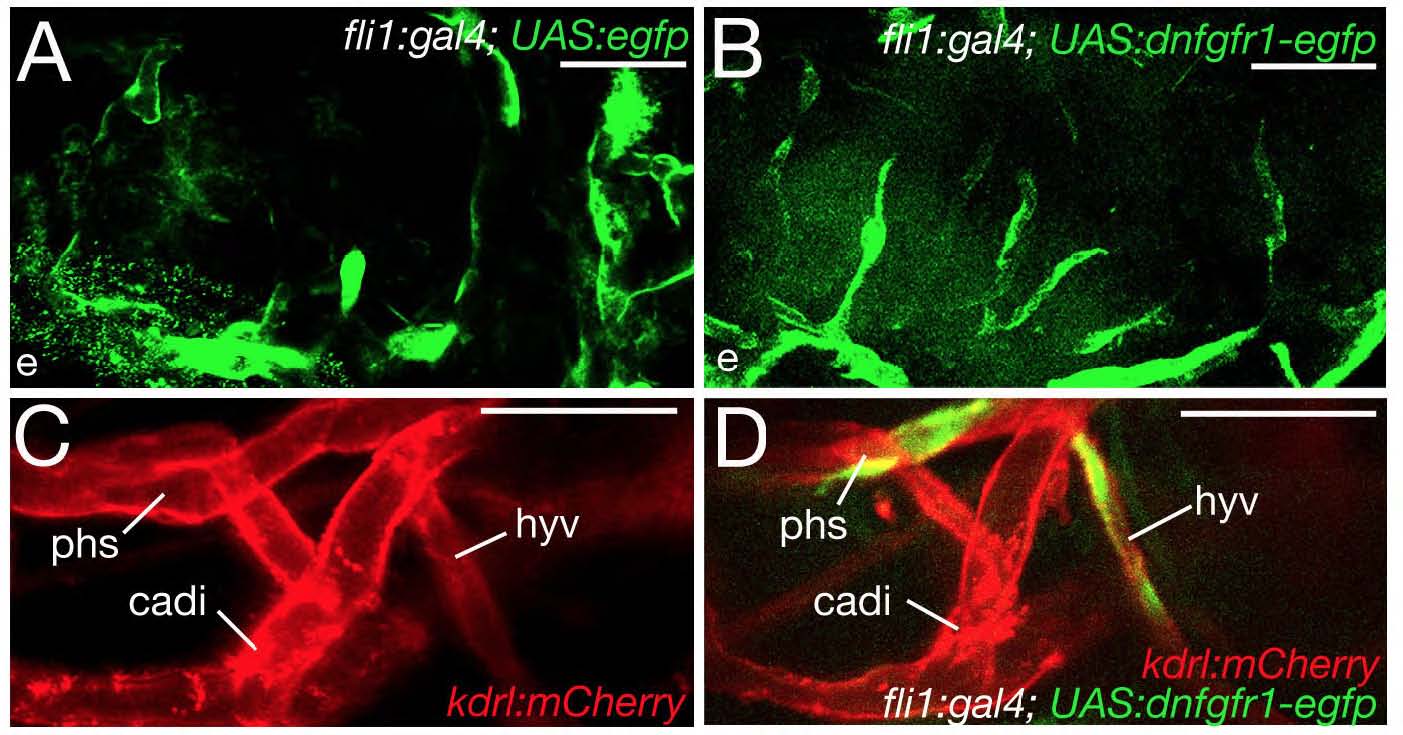Fig. S6 Endothelial cells expressing the dominant-negative Fgfr1 receptor contribute normally to other cephalic blood vessels and do not affect morphogenesis of the hypophyseal vein. (A-D) Confocal in vivo images of different transgenic fish, as indicated; 100 hpf; ventral views, anterior to the left. Injection of the UAS:egfp control (A) or the UAS:dnfgfr1-egfp plasmid (B,D) into tg(fli1a:gal4); tg(kdrl:mcherry) double transgenic animals leads to mosaic expression of EGFP (A) or the truncated Fgfr1 receptor fused to EGFP in endothelial cells. For simplicity, the red channel is omitted in A and B, and the green channel omitted in C. (A,B) Endothelial cells with activation of the UAS-egfp transgene (A) or the UAS:dnfgfr1-egfp transgene (B) display comparable contributions to cephalic blood vessels. Nevertheless, their contributions to the hypophyseal artery and the two branches encompassing the pituitary differ (80% versus 40%; data not shown). (C,D) Morphogenesis of the hypophyseal vein is unaffected by endothelial cells expressing the UAS:dnfgfr1-egfp transgene. cadi, caudal division of internal carotid artery; e, eye; hyv, hypophyseal vein; phs, primary head sinus. Scale bars: 50 μm.
Image
Figure Caption
Acknowledgments
This image is the copyrighted work of the attributed author or publisher, and
ZFIN has permission only to display this image to its users.
Additional permissions should be obtained from the applicable author or publisher of the image.
Full text @ Development

